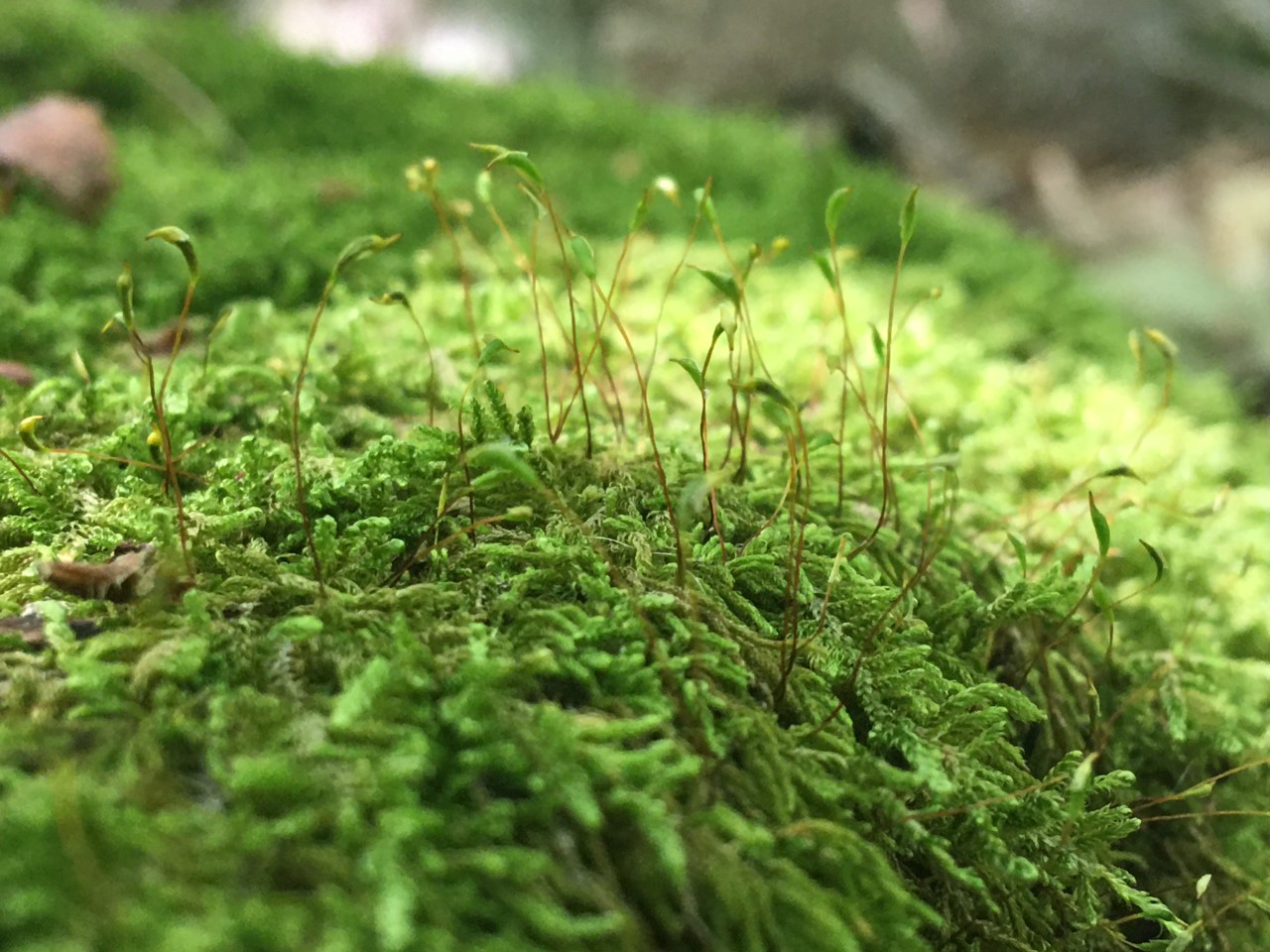The best way to extend the duration of a preserved moss product is by choosing an indoor location with the following attributes:
The lifespan of a preserved moss wall can range anywhere from two to eight plus years before it needs professional touch-ups. The longevity of these botanical works of art depends on the type of moss used, the ambient moisture of the environment, and whether the installation is out of human reach. While perfectly safe and inviting to touch, moss walls can be damaged by constant handling over time.
Even in less than optimal conditions, preserved moss will remain green and lush for years without daily maintenance. These artisan creations provide all the benefits of a living wall without the upkeep and expense.
Moss is one of the most ancient types of vegetation on our planet, with fossil records dating back hundreds of millions of years. Despite its ubiquitous presence in many ecosystems, the details regarding moss life spans remain a mystery to many. In this article, we’ll explore how long moss lives, the factors impacting its longevity, and why this ancient plant continues to thrive.
A Brief Primer on Moss Biology
Before diving into moss life spans, it helps to understand what makes this plant unique. There are over 20,000 species of moss, characterized by their small, soft leaves and lack of proper roots, flowers or seeds. Mosses reproduce via spores, are non-vascular (lacking water-transporting cells), and thrive in damp, shady areas.
The moss life cycle alternates between two generations
-
The gametophyte consists of the green, leafy structures we associate with moss. This stage is haploid meaning it contains a single set of unpaired chromosomes.
-
The sporophyte generation emerges from the tip of the gametophyte as a spore capsule on a thin stalk It is diploid, with paired chromosomes The capsule releases spores that develop into new gametophytes, restarting the cycle.
This unique lifecycle and physiology allows mosses to survive almost indefinitely under the right conditions. Let’s look at the details.
Factors Impacting Moss Longevity
Several key factors influence moss life span:
1. Access to moisture
As non-vascular plants, mosses rely on moisture for nutrient transport and photosynthesis. Most species require constant dampness. When mosses dry out, they enter dormancy until water returns.
-
Some mosses can survive over a decade in dormancy before reviving with new moisture. For example, Anoectangium compactum can persist for 19 years!
-
Too much moisture can also be detrimental, causing rot. The ideal condition is consistently damp but not soggy.
2. Light levels
While mosses prefer shady spots, some sunlight is needed for photosynthesis. Insufficient light will impair growth and reproduction.
3. Temperature
Mosses grow best in cool, mild temperatures. Extreme heat or prolonged freezing can damage or kill them. However, mosses native to cold climates can handle freezing and enter dormancy.
4. Species adaptations
Some moss species are more robust and long-lived than others. Tree-dwelling mosses may live for centuries, while more delicate ground cover mosses survive just a few years.
5. Habitat stability
Mosses thrive in undisturbed habitats. Environmental disruptions like trampling, erosion, and pollution can rapidly destroy moss colonies. Stable moss habitats allow generations to persist.
Estimating Moss Life Spans
Given suitable growing conditions, moss can live indefinitely:
-
Individual gametophyte plants typically survive around 3-10 years in nature. However, mosses over 50 years old have been documented.
-
Moss clones spreading from an original ancestor plant can persist for decades or centuries. Certain moss clones in the arctic are estimated to be over 1,500 years old!
-
Thick moss beds accumulating growth over generations may be thousands of years old. For example, some moss banks in the UK date back over 5,000 years.
-
Spores can remain viable for extreme lengths of time, with one study showing spores germinating after 1,500 years of dormancy! This remarkable longevity essentially makes mosses immortal.
In ideal, undisturbed habitats, moss populations can survive indefinitely through spreading growth and spore production. Individual plants lead fleeting lives, but the moss community lives on through each generation.
Why Does Moss Live So Long?
Several key traits allow mosses to survive for millennia:
-
Spore reproduction – Each capsule releases millions of microscopic spores that disperse and propagate new plants. This efficient dispersal and reproductive strategy ensures continuation of moss genotypes.
-
Clonal growth – Moss gametophyte plants grow via cloning, with each shoot potentially giving rise to a new plant. This exponential spread allows moss colonies to expand across large areas over time.
-
Dormancy – During harsh conditions, mosses shut down metabolically and await the return of moisture and mild temperatures to revive. This mechanism enables persistence through seasons and disturbances.
-
Environmental tolerance – Mosses thrive in moist, shady, cool habitats avoided by most plants. With limited competition, they persist in ecological niches for eons.
-
Pollution tolerance – Mosses readily absorb toxins from air and water pollution. While harmful to vascular plants, mosses survive and accumulate pollutants for centuries.
In essence, the simple yet resilient biology of moss allows it to inhabit environments hostile to almost all other life. Like an ancient artifact, moss patiently endures the test of time.
While often overlooked, mosses are one of the most successful plant groups on Earth. They represent our planet’s living botanical history, with individual plants, clones, and populations persisting for millennia in suitable habitats worldwide. This longevity is made possible through unique adaptations enabling mosses to weather harsh conditions by entering dormancy or simply tolerating extremes lethal to almost all other plant life. So next time you walk through a mossy forest or kneel to admire a velvety green moss garden, reflect on the fascinating survival abilities that allow this tiny plant to endure the eons.

Longevity of preserved moss walls
Quiet Earth Moss utilizes different types of sustainably harvested natural moss– preserved with non-toxic food dye and oils. Unlike dried moss, which loses its color, soft texture and easily disintegrates, preserved moss retains its vibrancy and living appearance for years.
How long will a Quiet Earth custom preserved moss wall last? You can count on several years, but the exact lifespan will depend on the species of moss:
- Reindeer Moss – The most popular choice for wall panels and decorative mosaics, this richly-colored moss can last more than five years before needing restoration. The longevity drops to two years if the panel is accessible to human touch.
- Sheet Moss, Fern Moss, Pole Moss, and Mood Moss – These mosses are ideal for high-traffic places and remain pristine for 3+ years before needing touch-ups. If installed in areas where no one can touch it, they can last 8-10 years without professional maintenance.
With periodic touch-ups to restore fallen and damaged pieces or re-apply oils, preserved moss walls can last for decades, making them a smart investment for any interior space. The preservation process used by Quiet Earth is eco-friendly and maintains the color, integrity, and softness of natural moss.
Finally, whether installed in a lobby or commercial workspace, these panels are virtually indistinguishable from living moss walls but have the advantage of zero maintenance. Preserved moss requires no irrigation, soil substrate, sunlight, or special care. A light dusting from time to time is all that is required to enrich your interior space with biophilic elements.
Contact Us at Quiet Earth Moss for More Information

Quiet Earth Moss is proud to offer 100% handcrafted products that are cost-effective, maintenance-free, and designed to last for years. Bring the mood-boosting benefits of nature into your office space with our custom preserved moss wall panels. Contact us for more information today!
What type of habitat does Moss live in?
FAQ
How long will moss stay alive?
When mosses first dry out, they don’t die right away; they simply turn brown and go dormant. They can stay like this for various lengths of time before they must be rehydrated, depending on the species. One variety, Anoectangium compactum, can survive an incredible 19 years without water [source: Richardson]!
What happens to moss when it dies?
While moss is resilient, once it’s entirely dried out, reviving it can be a challenge. Regular hydration is key. What happens to moss when it dies? Dead moss loses its vibrant green hue and becomes brown, eventually decomposing.
How do you keep live moss alive?
Consistent meaning not too wet, not too dry, not too bright, not too dim, not too hot, not too acidic, not too alkaline etc. It’s all about consistency, routine and rhythm to keep moss alive and you can achieve this by scheduled watering, adjusting potting methods, or by using an enclosure like a cloche or terrarium.
What is the life cycle of a moss?
The moss life cycle, also known as alternation of generations, involves two distinct multicellular phases: the haploid gametophyte and the diploid sporophyte.
